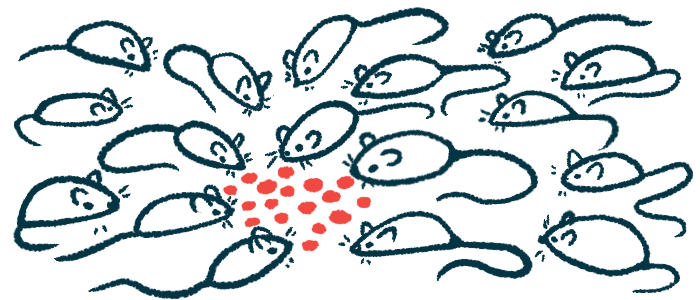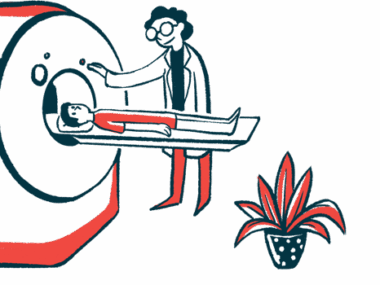Imaging technique may be useful research tool in Pompe models
IVM visualization tool found to help monitor treatment responses in mice
Written by |

A powerful imaging technique called high-resolution intravital microscopy, or IVM, may be a useful tool for visualizing and quantifying the effectiveness of investigational treatments in mouse models of Pompe disease, according to recent research.
The approach allows for cellular changes in muscles to be visualized in live animals. Using IVM, scientists showed that an investigational gene therapy for Pompe effectively breaks down cellular waste that’s known to accumulate in muscle cells.
These effects could be seen not only in the leg muscle but also in the tongue. Given these results, the use of this imaging technique might allow researchers to more easily and non-invasively monitor treatment responses in the long term, according to the authors.
The findings were published as a letter to the editor, titled “Intravital imaging of muscle damage and response to therapy in a model of Pompe disease,” in the journal Clinical and Translational Medicine.
IVM may offer faster way of assessing responses to therapies
In Pompe disease, mutations in the GAA gene lead to a lack of a functional acid alpha-glucosidase (GAA) enzyme. GAA is normally responsible for breaking down glycogen, a large sugar molecule, to produce energy. This occurs inside lysosomes, the cellular compartments that serve as the cell’s recycling center for unneeded molecules.
A GAA deficiency causes glycogen to toxically accumulate in lysosomes, especially within muscle cells, leading to symptoms of progressive muscle weakness. Therapeutic approaches for Pompe disease aim to increase glycogen breakdown.
Autophagy is the series of cellular events that ultimately leads to the delivery of unneeded cellular cargo to the lysosome. When lysosomes are dysfunctional due to GAA buildup inside them, there also is an accumulation of autophagosomes — the structures carrying cellular waste that are normally engulfed by lysosomes during autophagy — called autophagic buildup.
As such, studies suggest that the elimination of autophagic buildup is another reliable indicator that a therapy for Pompe disease might be effective.
Testing new therapeutic candidates for Pompe disease typically involves using mouse models, with scientists looking to see whether the treatment is increasing glycogen clearance. To do this, several different techniques are applied to analyze muscle tissue samples from the animals. This process is lengthy and requires a large number of animals.
With high-resolution IVM, autophagic buildup can be visualized in the muscles of a living animal, thus offering a faster way to see if a therapy is working.
Use of imaging technique may require ‘much-reduced number of animals’
The scientists last year published a study describing the development of a gene therapy that delivers a working version of the GAA gene. The results showed that it increased GAA activity and reduced glycogen buildup in a mouse model of Pompe.
Now, the team returned to this gene therapy approach, but instead applied IVM to look at autophagic buildup in living muscle tissue. The mouse model essentially was engineered to also have a fluorescent marker that will visualize autophagosomes.
Seven weeks after a single infusion with the gene therapy, the researchers visualized the gastrocnemius muscle in the leg using the imaging technique. While untreated mice had autophagic accumulation all along the muscle fiber, this was reversed in those given the gene therapy, where the buildup was nearly completely eliminated.
The finding is consistent with their earlier study, but the researchers noted that the IVM technique allowed them to directly observe this reversal in the live tissue, “without laborious biochemical and molecular biology techniques and with a much-reduced number of animals.”
This is the first report of IVM application to visualize muscle damage in Pompe disease. … [This] model enables monitoring of … disease progression and response to therapeutic interventions by non-invasive imaging of the tongue muscle.
Next, the researchers wanted to evaluate whether therapeutic efficacy could be monitored by instead looking at the tongue muscle, which could allow for non-invasive and long-term monitoring of disease progression. Weakness and wasting in the tongue muscle are seen in Pompe patients.
First, using standard ex vivo approaches — ones outside the living animal — the scientists found that autophagic buildup was observed in the tongue of the Pompe mouse model in similar patterns as that seen in skeletal muscle.
This was also observed with IVM imaging, and reversed with the gene therapy as was seen in the leg muscle.
“This is the first report of IVM application to visualize muscle damage in Pompe disease,” the researchers wrote.
“The reporter model enables monitoring of the disease progression and response to therapeutic interventions by non-invasive imaging of the tongue muscle,” the team concluded.







